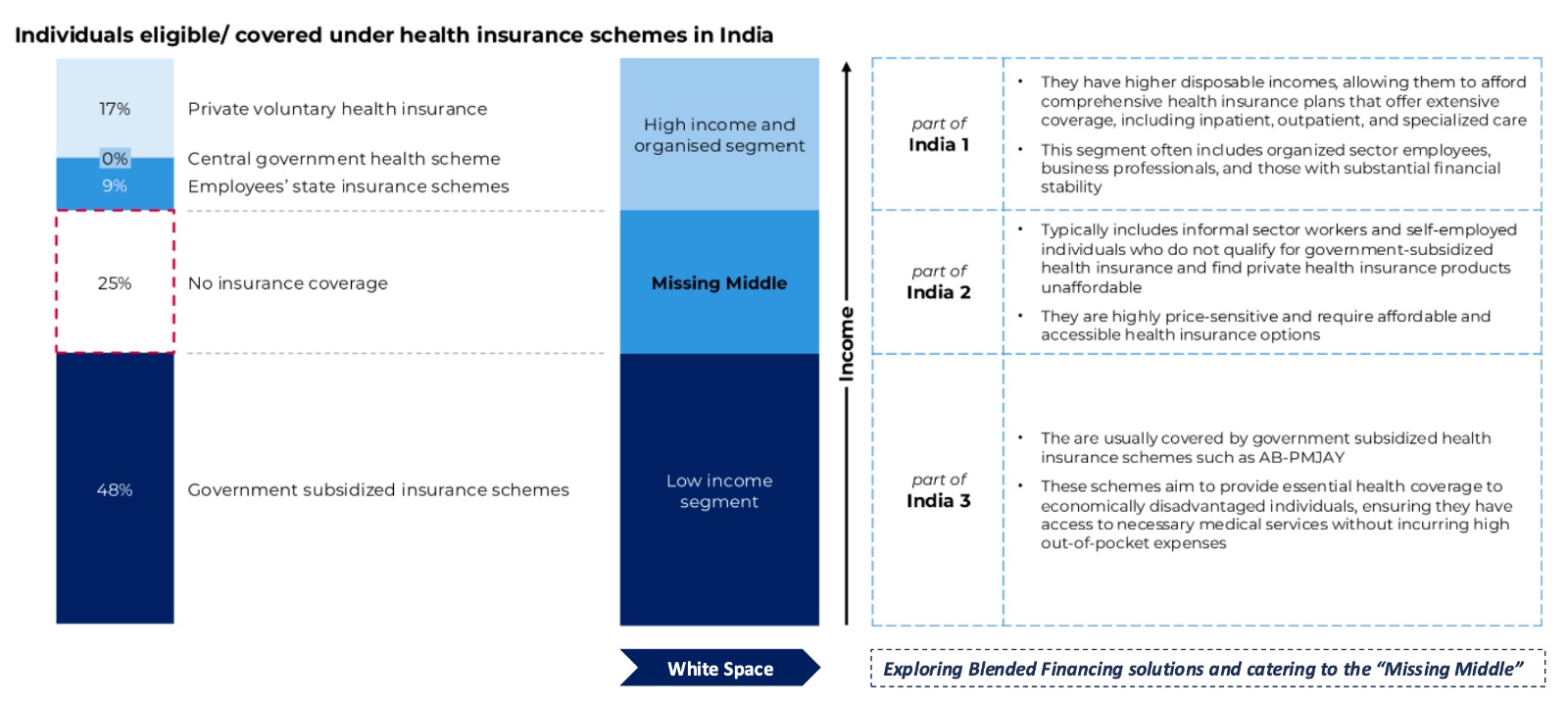
How Single Specialty Hospitals and Affordable Healthcare Are Shaping the Future
February 3, 2025
"Opportunities don't happen, you create them." – Chris Grosser
Exploring Two Themes with Abundant Value Creation Opportunities
1. Single Specialty Hospitals
Single specialty hospitals represent a significant and growing segment of India’s healthcare market. Estimated at $14-17 billion, they account for approximately 20% of the total healthcare market, valued at $72-84 billion. These hospitals predominantly cater to eyecare, dental, IVF, and mother and child healthcare services, which make up 70% of this segment.
The historic Compound Annual Growth Rate (CAGR) of single specialty hospitals aligns with the overall healthcare delivery market at 12-13%. Despite their promising growth, they face several challenges:
- Personnel Issues: There is a noticeable shortage of doctors, nurses, and administrative staff. High attrition rates and the need for soft skills and patient interface training further complicate staffing challenges.
- Cash Flow: Effective working capital management, access to affordable debt, and managing capital expenditures are critical financial hurdles.
- Competition: Single specialty hospitals face stiff competition from multi-specialty hospitals. They also grapple with input pricing pressures and the rapid evolution of medical technologies.
Private equity investments have shown strong interest in this sector, with 25% of total investments over the last five years directed towards single specialty hospitals, amounting to $2.8 billion in total deal value. Notably, 86% of these investments have been funneled into eyecare, oncology, mother and child healthcare, IVF, and dermatology chains. Eyecare has witnessed the largest deals, followed by IVF and oncology.

2. Solving Affordability and Accessibility for “The Missing Middle”
India's healthcare coverage landscape reveals a significant gap referred to as "The Missing Middle," accounting for 40 crore individuals. These individuals are priced out of healthcare coverage at both ends of the spectrum.
Insurance Coverage Breakdown:
The "Missing Middle" primarily includes informal sector workers and self-employed individuals who do not qualify for government-subsidized health insurance and find private health insurance products unaffordable. This group is highly price-sensitive and requires affordable and accessible health insurance options.
Segment Details:
- High Income and Organized Segment: These individuals have higher disposable incomes, enabling them to afford comprehensive health insurance plans. This segment includes organized sector employees, business professionals, and financially stable individuals.
- Missing Middle (Part of India 2): This segment includes informal sector workers and self-employed individuals. They are highly price-sensitive and lack access to affordable health insurance.
- Low Income Segment (Part of India 3): This group is usually covered by government-subsidized health insurance schemes such as AB-PMJAY, which provide essential health coverage to economically disadvantaged individuals.
Addressing the needs of the “Missing Middle” involves exploring blended financing solutions and creating tailored health insurance products that are both affordable and comprehensive.
Genme's Role: Genme is at the forefront of solving affordability and accessibility issues by developing scalable healthcare solutions that cater to diverse populations. Our affordable telehealth platforms and mobile health technologies have revolutionized the way healthcare is delivered, making it more accessible to remote and low-income communities. Genme's commitment to innovation ensures that quality healthcare is within reach for everyone, driving significant social impact while creating value for stakeholders.

Conclusion
Both single specialty hospitals and addressing the affordability and accessibility gaps in healthcare coverage present abundant value creation opportunities. While single specialty hospitals offer targeted, efficient care with significant investment potential, solving the issues faced by the "Missing Middle" can lead to widespread social and economic benefits, enhancing the overall healthcare ecosystem in India.
References
- Blume Report: Healthcare Financing India Blueprint
- Reimagining Healthcare in India through Blended Finance (NITI Aayog)
- Health Insurance for India’s Missing Middle, NITI Aayog
- Evolution of Specialty Hospitals, Kearney